FloodSax®: Innovative, Easy-to-Use Flood Defense Technology that Outperforms Traditional Sandbags
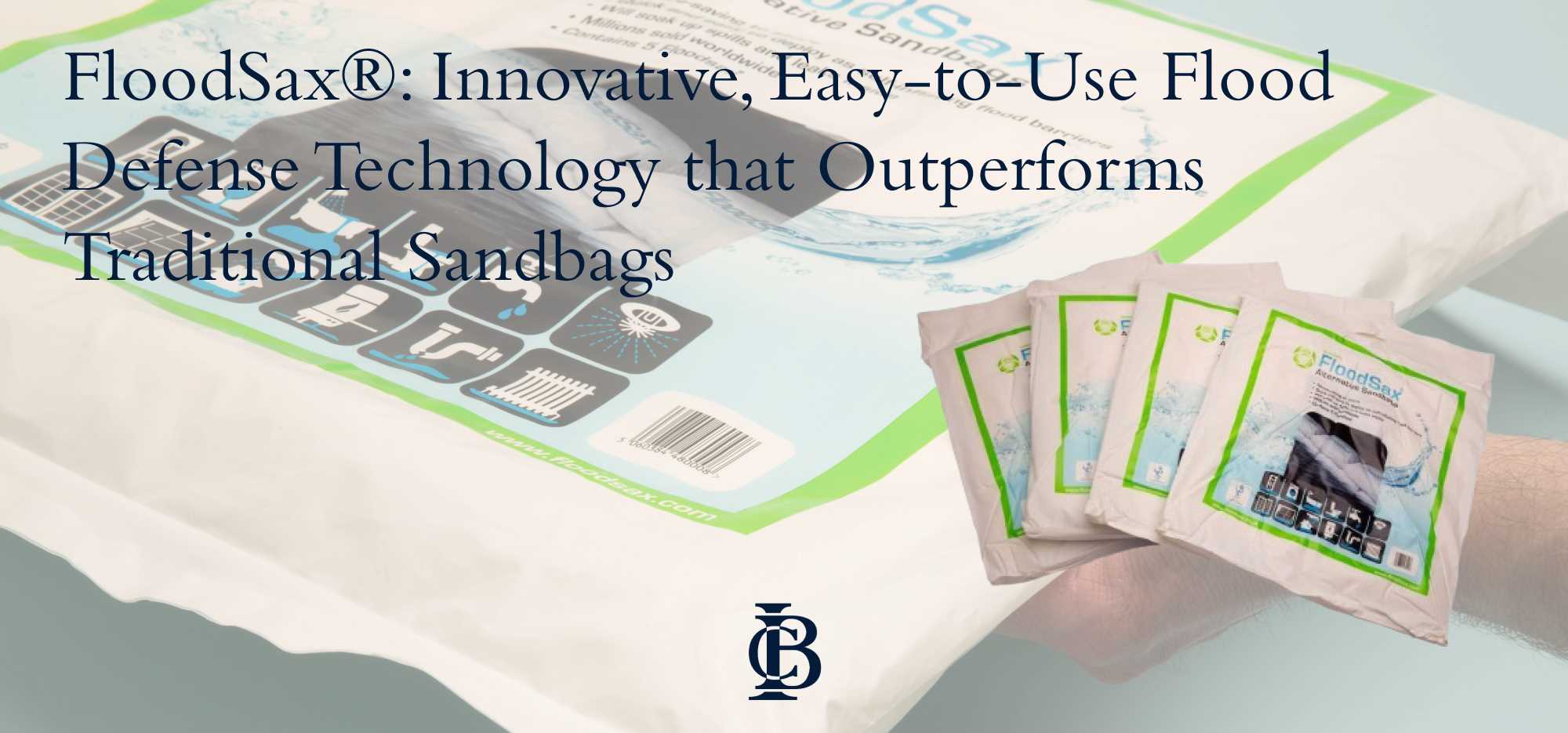
FloodSax®: Innovative, Easy-to-Use Flood Defense Technology that Outperforms Traditional Sandbags
Unpacking Flooding Issues and Defense Strategies
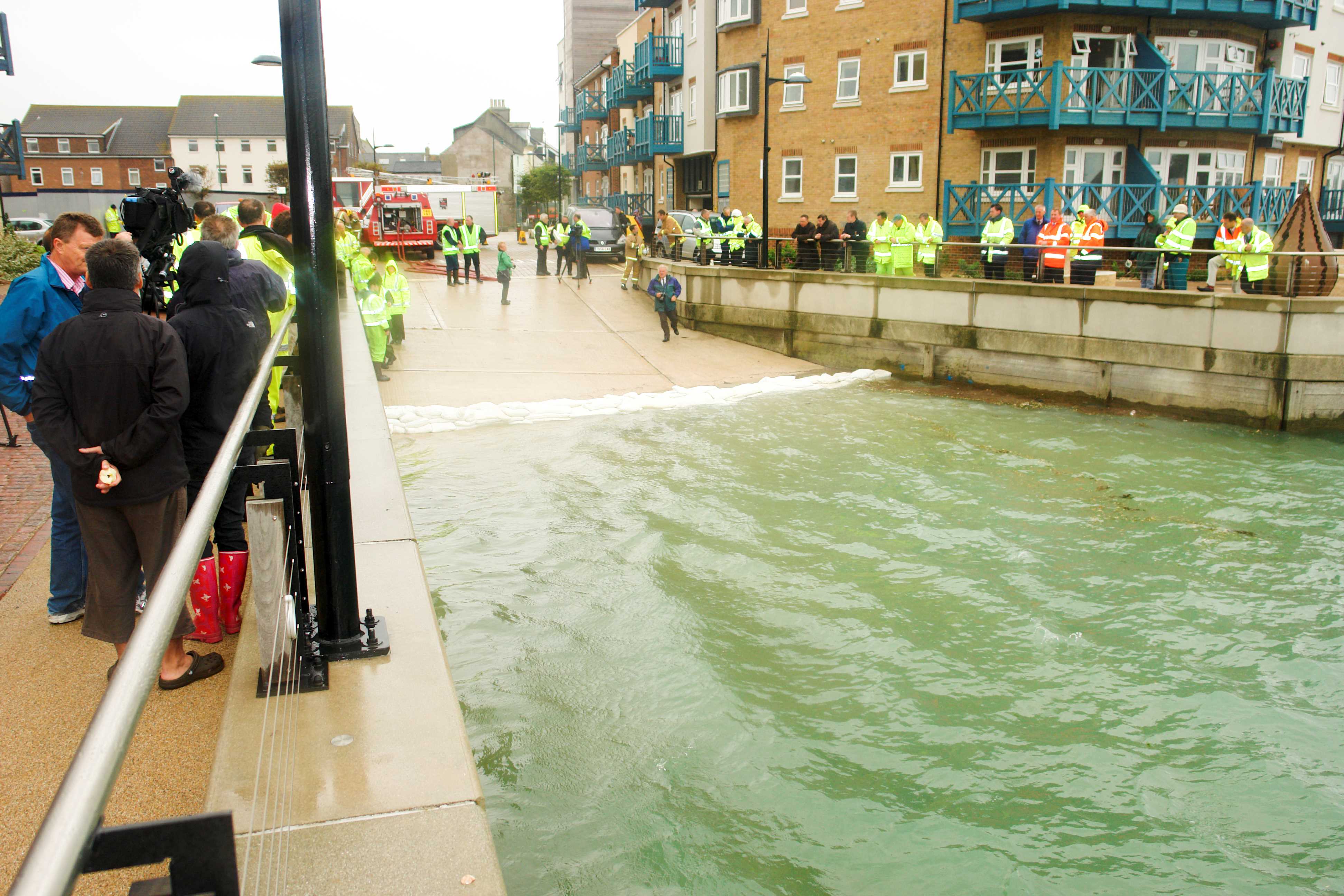

As climate change intensifies, the UK faces a serious problem with its flood defenses. Living near rivers and streams makes it even trickier due to the two main types of flooding: from rivers (fluvial) and from surface water. The Environment Agency does a good job mapping river risks, but surface water, affected by human activities, adds an unpredictable element.
This situation is concerning: more than 4,000 crucial flood defenses in England, including walls and culverts, are rated as poor or very poor - according to Unearthed, a journalisitic extension of Greenpeace. Following Storm Babet in later part of October 2023, the government is closely examining the UK's ability to withstand flooding, especially given that over 25% of flood defenses classified by the government as 'high consequence' of these defenses are privately owned and lack proper oversight.
Due to this, there is no publicly available record of the individuals or entities owning this critical infrastructure. These defenses encompass a variety of structures, including flood walls, embankments, outfall pipes, and culverts—subsurface conduits situted beneath roads, railways, or other properties.
Understanding the Climate Change Connection: Addressing Flooding Risks


The issues highlighted in the previous text point to several concerns. Firstly, the intensified impact of climate change on the UK's flood defenses underscores the urgency for robust and reliable solutions, With the current projections for the United Kingdom indicate a potential change in sea level ranging from 0.27 to 1.12 meters by the close of this century. This evaluation aligns with other indications, affirming that the UK will likely need to adjust to a sea level rise exceeding 1 meter in the future.
These estimates highlight the anticipated variations in sea level that the UK may experience as a result of ongoing climate changes.. Living near rivers and streams amplifies the complexity, given the dual threats of fluvial and surface water flooding.
The revelation that over 4,000 vital flood defenses in England are rated as poor or very poor raises red flags. This information signals potential vulnerabilities in the existing defense infrastructure. The aftermath of Storm Babet has triggered government scrutiny, emphasising the need for effective flood defense mechanisms, or at least ones that are much more avaiable to the public in the event of flooding events.
For example, a significant issue lies in the fact that more than a quarter of these critical flood defenses are privately owned, with no public record of ownership. This lack of transparency introduces uncertainty regarding the maintenance and oversight of these defenses. Those looking to invest or purchase flood defense products may be concerned about the efficacy of their chosen solutions when a considerable portion of the infrastructure is not subject to public scrutiny. If we take into account the diversity of structures involved, such as flood walls, embankments, and culverts, this only adds complexity to the overall flood defense landscape.
The absence of a publicly available record of ownership for these structures raises questions about accountability and the reliability of the overall flood defense strategy—in other words, are they getting their moneys worth, are the products they are relying on, up to the standard that is required for public safety.
What is needed, is reliable, publicly available products that are not only effective flood defence equipment, but also versitile and affordable for end-user customers who need to prevent flood event from damaging their homes, businesses and livilihoods. Overall, the need for transparent and robust flood defense measures is underscored by the current challenges facing the UK's flood defense infrastructure.
In the past people have relied on more 'make-shift' methods, that have proven to help in the effort against flooding. Which brings us to our next point...
An Old 'Reliable' Solution? Traditional Sandbags for Flood Defence
Sandbags have long been a familiar sight in flood defense efforts, known for their cost-effective and easily deployable nature. Traditionally used against flooding, sandbags offer advantages such as being economical to create and transport, making them a practical option for widespread deployment in response to flood risks. Their quick deployment is particularly beneficial in high-risk locations like riverbanks, providing essential additional time for residents and businesses to implement further flood defenses like connectable / portable flood defence walls.
Serving to block doorways, drains, and other property openings. Sandbags are also utilised to weigh down manhole covers, secure garden furniture, and block sink, toilet, and bath drains to prevent water backing up. Their versatility extends to short-term water exclusion, a capacity that can be enhanced by using them in tandem with plastic sheeting. Furthermore, sandbags have the capability to filter out some muddy sediments present in floodwaters, making them a practical choice.
Identifying Issues with Traditional Flood Defence Bags
Despite these advantages, sandbags exhibit certain drawbacks when compared to purpose-designed flood protection products. Filling them requires two people, unless a sandbag filling machine is available, and the process is time-consuming, taking approximately one hour to fill 12 sandbags. Handling and laying them can be challenging, especially in running water, as sacking material is biodegradable and susceptible to perishing if left in place for an extended period.
Moreover, the inherent difficulty of placing sandbags in water and their tendency to seep water, even when well-stacked and trodden into place, underline the limitations that prompt consideration of more effective and efficient flood defence alternatives that are built for the very objective of flood prevention.
Amidst the pressing concerns raised by the challenges facing the UK's flood defenses, it's crucial to acknowledge the effectiveness of certain measures, including the use of traditional, easily reachable flood defense tactics such as sandbags. While the identified issues, such as the potential sea level rise and the vulnerability of vital flood defenses, necessitate urgent and robust solutions, products like sandbags can play a valuable role in mitigating immediate risks.
Sandbags, with their versatility and quick deployability, offer a cost-effective first line of defense, especially in high-risk areas. They prove effective in preventing water ingress for short periods and filtering out sediments in floodwaters. However, it's essential to recognise that traditional methods have limitations as previously mentioned, requiring labor-intensive setup, time-consuming efforts, and facing challenges in handling and placement.
Introducing Floodsax: A Purpose-made, Accessable Flood Defence Alternative
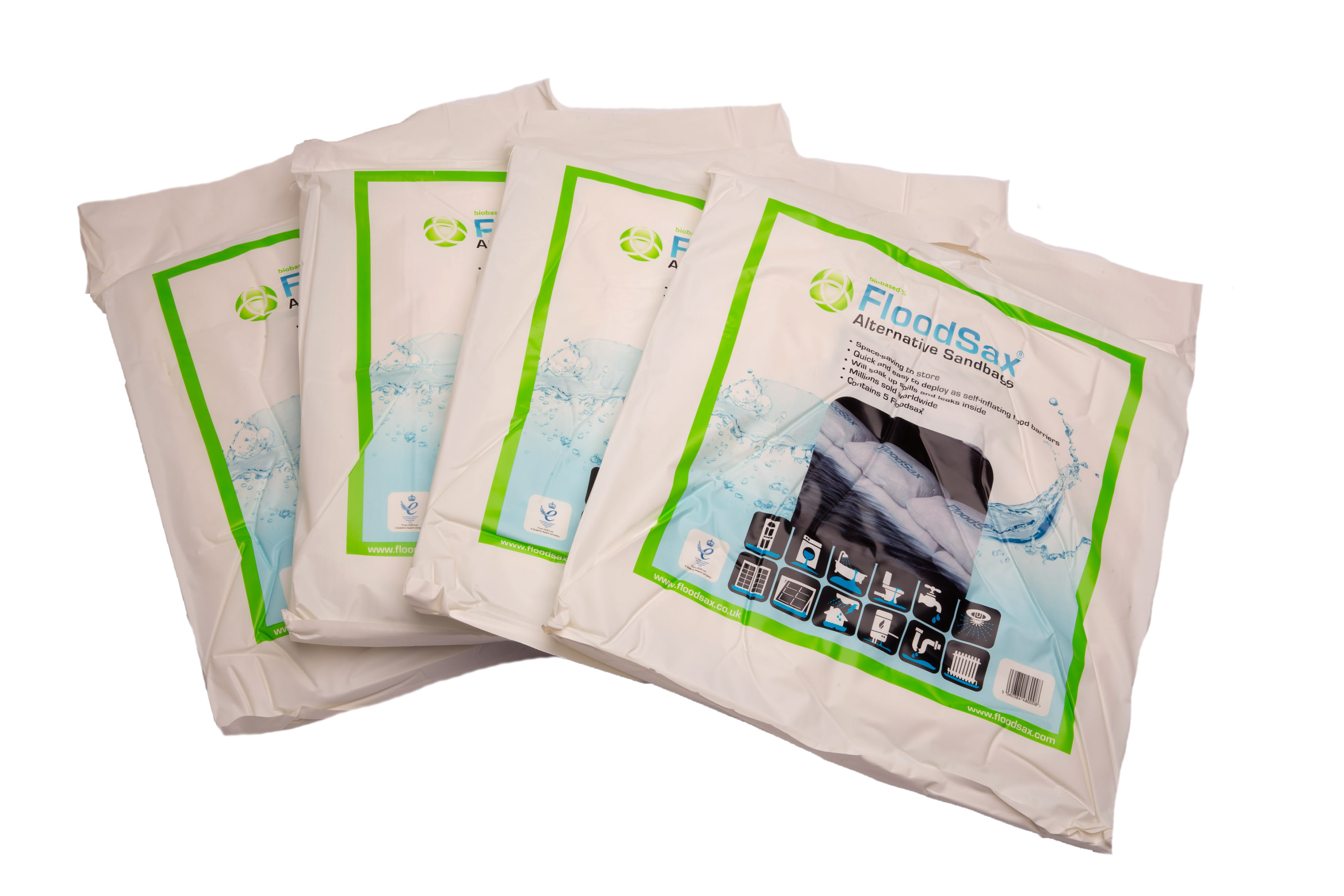

The desire for self-reliance stems from the shortcomings identified in existing flood defense mechanisms, as evidenced by the poor or very poor ratings of over 4,000 vital flood defenses in England. In the aftermath of events like Storm Babet, where the shortcomings of public flood warnings were evident, the need for accessible and user-friendly solutions becomes even more pronounced. People want solutions that are within their reach, both physically and financially, empowering them to proactively safeguard their homes and possessions.
As the urgency for transparent and robust flood defense measures grows, the integration of such innovative solutions becomes imperative to ensure public safety and protect against the challenges posed by climate change and inadequate infrastructure.
The appeal of sandbags lies not only in their simplicity but also in the sense of control they offer to individuals amidst the unpredictability of flooding events. This inclination towards personal agency underscores the importance of integrating innovative yet user-friendly flood defense products into the broader landscape of available solutions.
Building upon the logic of these traditional measures, there is an opportunity to introduce more advanced, purpose-built products—like FloodSax® Which combine the advantages of sandbags with fewer drawbacks. Floodsax offer efficient water exclusion, ease of use, and versatility, addressing the limitations associated with traditional sandbags.
FloodSax: A Breakdown of the Flood Defence Technology
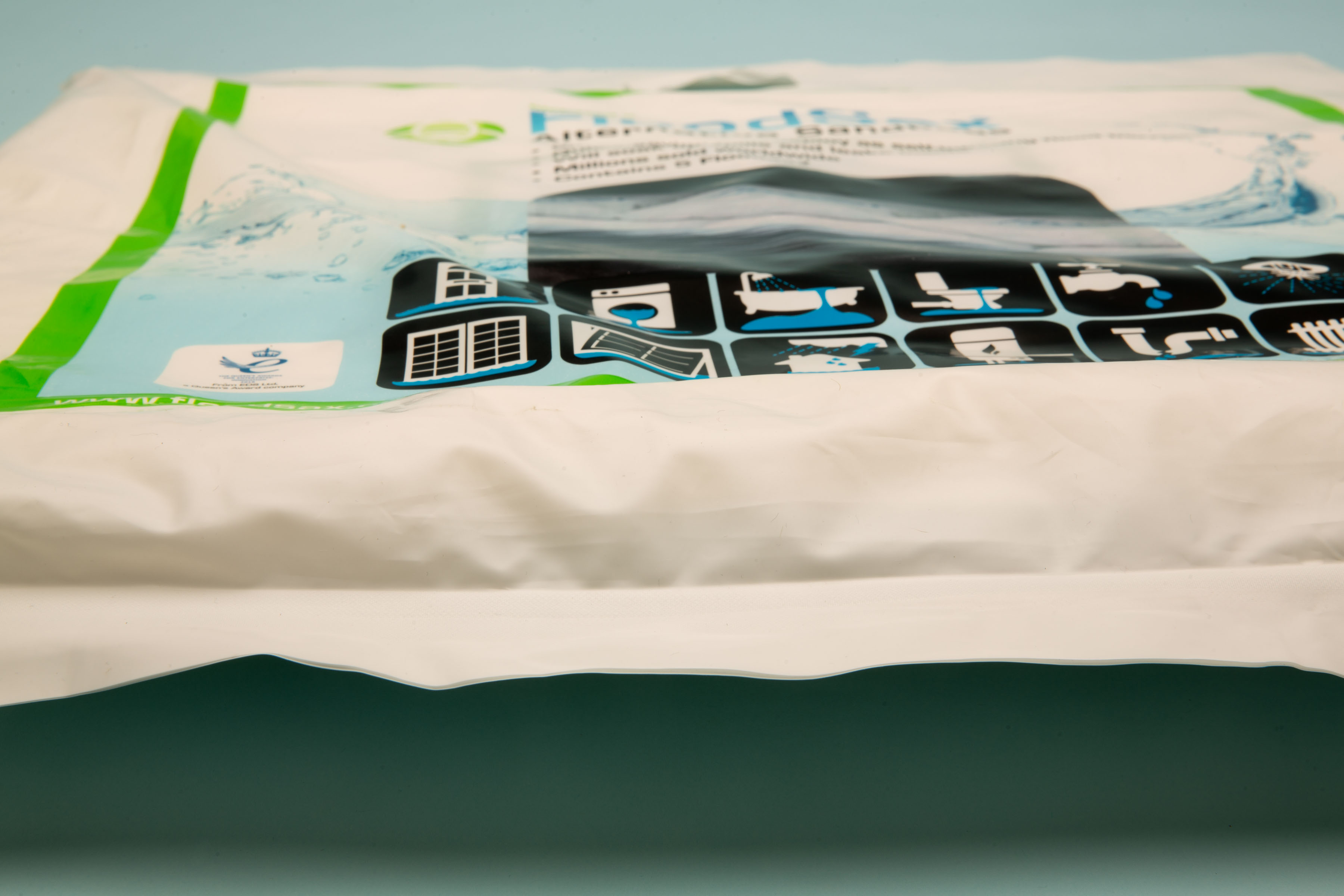
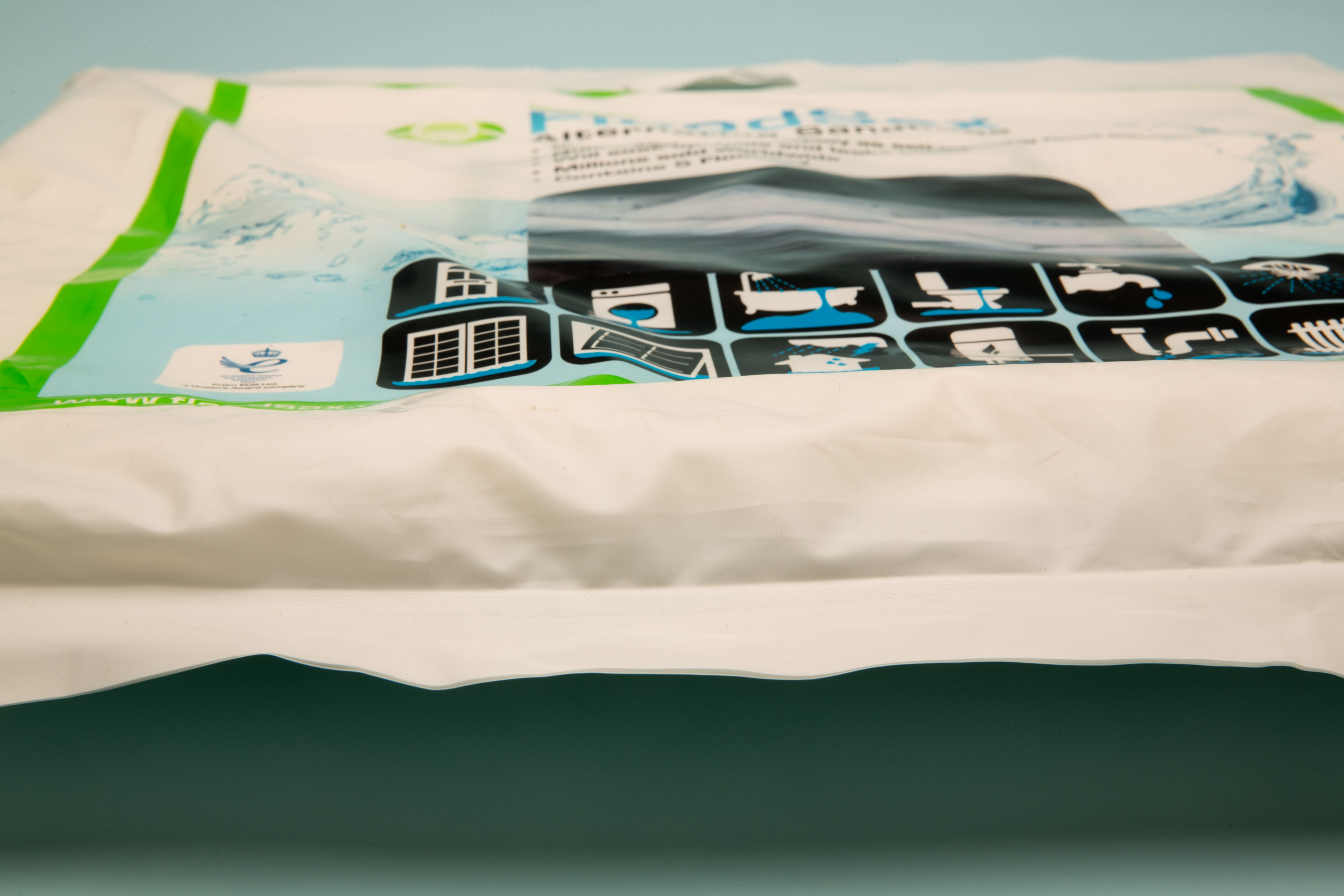
The absorbent layers within FloodSax® are composed of nonwoven casings, securely glued on all edges. Filled with a blend of fluff pulp and super absorbent polymer, these layers are meticulously sewn together, forming a multi-chamber system for enhanced effectiveness. The assembled layers are then enclosed in a sleeve of nonwoven material, stitched closed to create the final FloodSax® product.
Upon activation, FloodSax®'s hydrated weight varies between 20KG and 25KG, depending on water temperature or liquid type. It's essential to note that FloodSax® may not effectively work if they come into contact with certain liquids, such as sodium, acids, or those with a thick viscosity. Therefore, it's recommended to avoid using FloodSax® in environments where these substances may be present. This cautionary advice is based on test results to date, recognising the potential existence of other unknown liquids.
Considering the handmade nature of FloodSax®, manufacturing tolerances must be acknowledged. The material may experience slight expansion or contraction during the manufacturing process, and a similar effect may occur during the vacuum packing process.
As a result, FloodSax® maintains a manufacturing tolerance of + or - 10%.
The Features & Benefits of Floodsax: Cost, Storage, and Performance
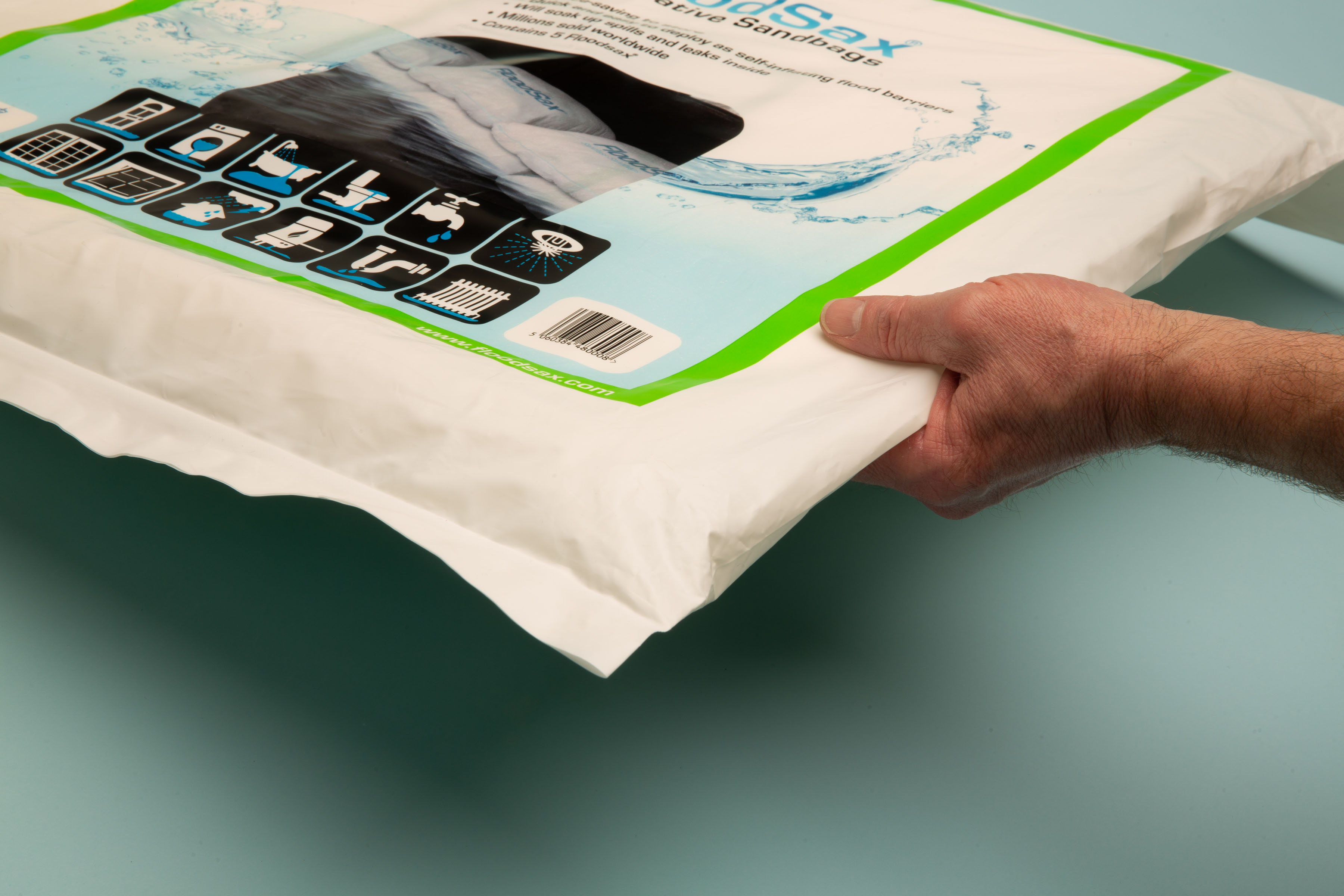
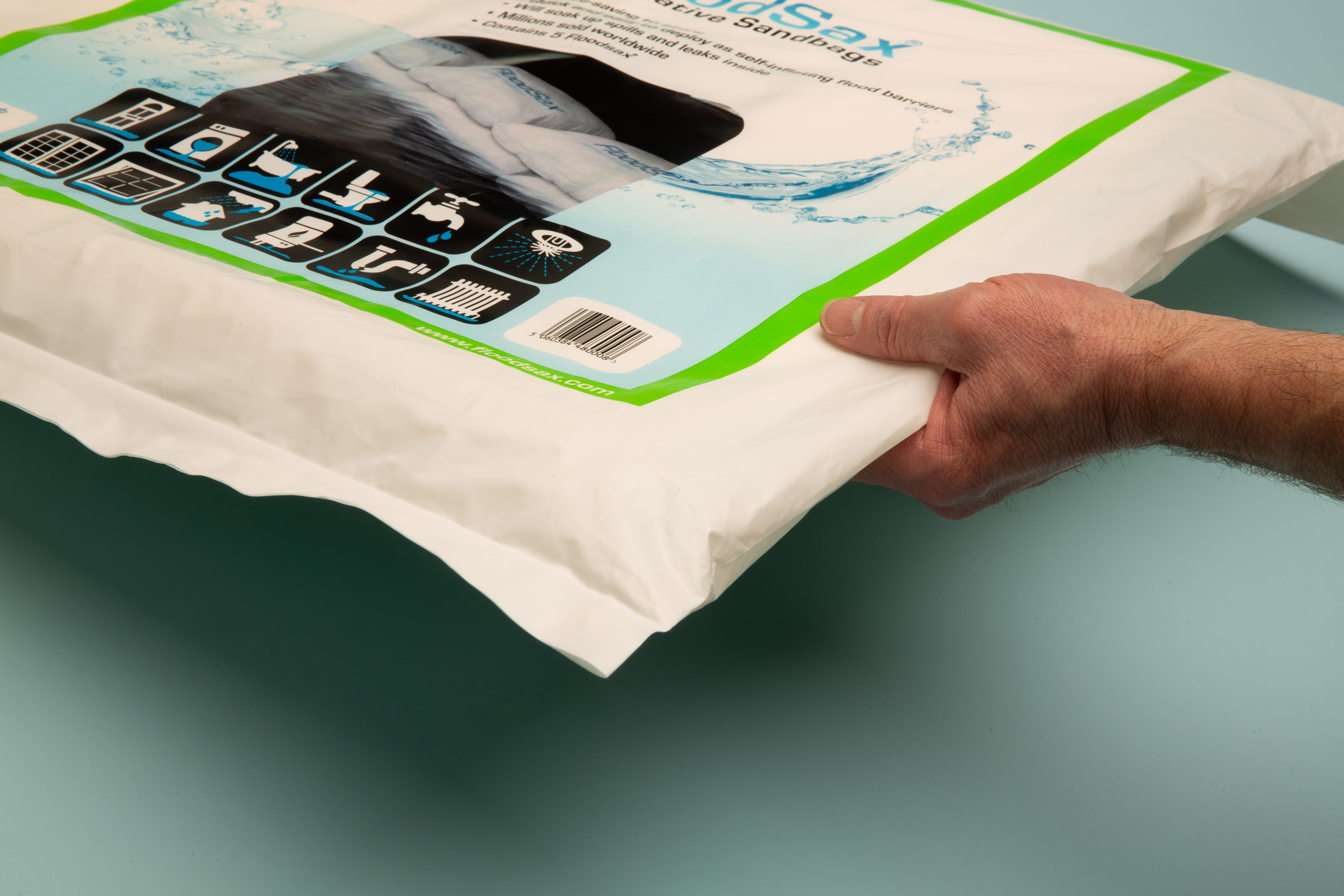
FloodSax® represents a pioneering self-inflating flood defense system set to revolutionize flood mitigation and liquid flow management. Featuring a semi-porous inner liner housing absorbent crystals, it efficiently absorbs water up to 90% of its capacity in 3 to 5 minutes, securely containing the absorbed water. Functioning akin to traditional sandbags, FloodSax® effectively wards off floods with heightened efficiency.
Stored conveniently in boxes of 20 for easy and compact storage, FloodSax® deployment is hassle-free. Transporting them to the incident site, they can be activated by soaking in water from various sources, expanding within five minutes for immediate use. Tailored to mold seamlessly into doorways, FloodSax® proves adept at keeping floodwaters at bay. Additionally, their versatility extends to addressing internal spills, showcasing adaptability.
Compared to traditional sandbags, FloodSax® offers a streamlined and innovative flood defense approach. Eliminating manual filling, FloodSax®'s storage and deployment are more convenient, with a quicker activation process—expanding and becoming taut within five minutes. The design facilitates easy soaking with water from various sources, surpassing the labor-intensive aspects associated with traditional sandbags.
FloodSax®'s ability to mold into doorways adds an extra layer of effectiveness, and its versatility in addressing both external floods and internal spills establishes it as a user-friendly, time-efficient, and adaptable flood defense solution.
FloodSax® presents a revolutionary flood defence solution with a myriad of advantages over traditional sandbags. Lightweight and capable of inflating or energising within 3 to 5 minutes, FloodSax® outshines sandbags in rapid deployment. Once energised, FloodSax® remains inflated for at least 7 days and can stay energised for up to 12 weeks when in contact with a liquid, offering a prolonged and reliable defence. Its unique and patented internal manufacturing method ensures that FloodSax® will not leak polymer gel and can absorb various liquids, not limited to water.
This versatile solution can be used both externally and internally for leaks and spills, providing a comprehensive approach to flood defence that traditional sandbags lack.
FloodSax® is transportable, boasting a 5-year shelf life, and can replace some spill kits, offering a more efficient and sustainable solution. Remarkably, one case of 20 FloodSax® weighing 16 kilos is equivalent to 400 kilos of sand, emphasising its lightweight nature and space efficiency.
Additionally, FloodSax® can be built into a wall up to a metre high, divert liquid flows, block pipes and toilets to prevent flows, and even contribute to hydrocarbon capture, resulting in a substantial carbon offset saving. The comprehensive features of FloodSax® redefine flood defence, making it a superior choice compared to traditional sandbags in terms of efficiency, versatility, and environmental impact.
Equipment Benefits of FloodSax: Outdated Methods and Addressing Accessability


FloodSax® stands out as an innovative solution in flood defense, outperforming traditional sandbags. Its distinct technology not only improves efficiency but also tackles key issues associated with outdated methods and the privatisation of flood defense infrastructure.
The technology within FloodSax® eliminates the need for manual filling, offering a quicker and more responsive solution compared to the time-consuming process of stacking sandbags. This design efficiently addresses both external floods and internal spills, surpassing the singular functionality of sandbags. Moreover, FloodSax®'s lightweight nature and space efficiency contribute to a more environmentally friendly solution, reducing the need for extensive storage and transportation.
The longevity of FloodSax® – remaining inflated for at least 7 days and potentially up to 12 weeks – provides a reliable defense against flooding, surpassing the relatively short lifespan of traditional sandbags. In the context of concerns surrounding the privatisation of flood defense infrastructure - as seen in the UK in recent years, FloodSax® serves as a decentralised and accessible alternative. Communities, local authorities, and individuals can deploy FloodSax® independently, empowering them to take proactive measures in flood protection.









